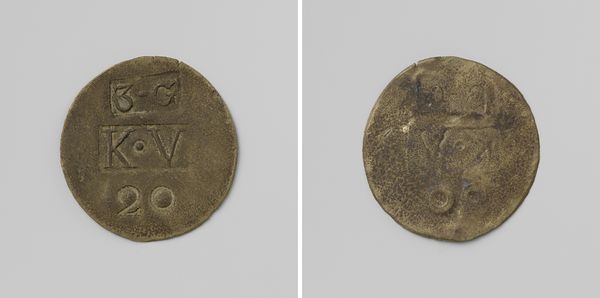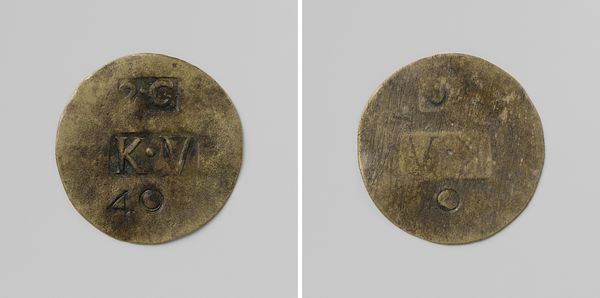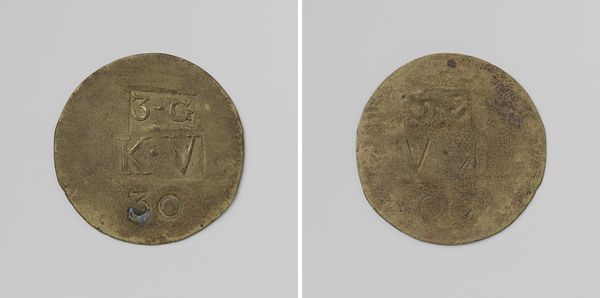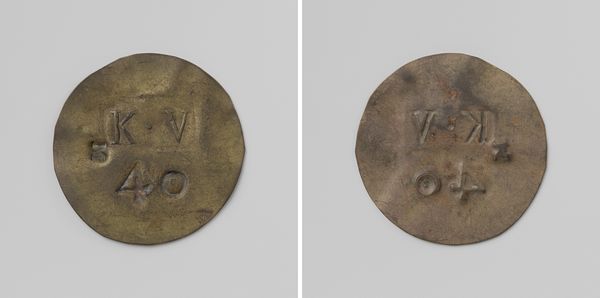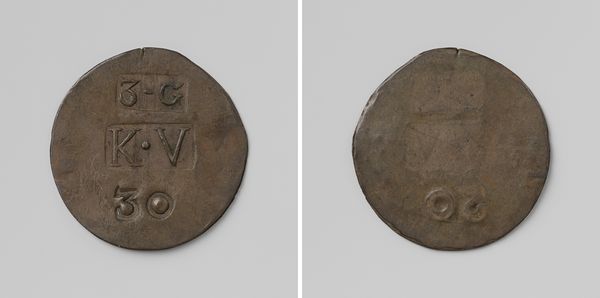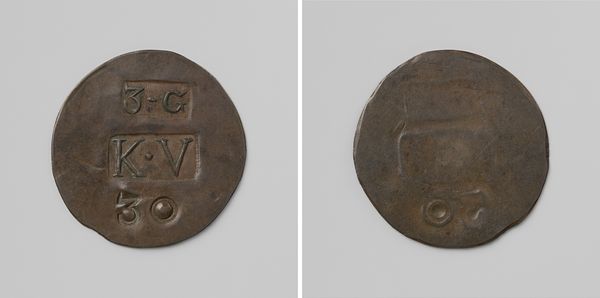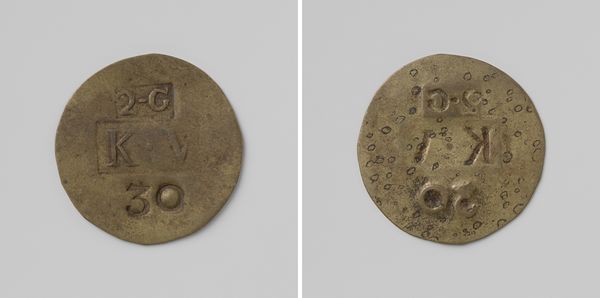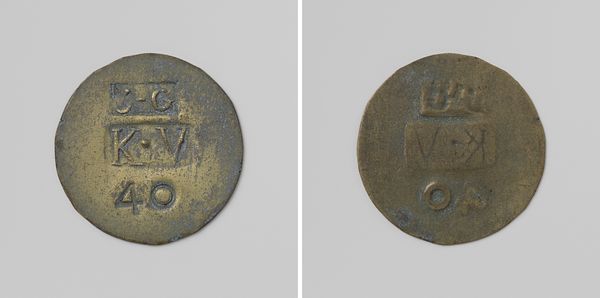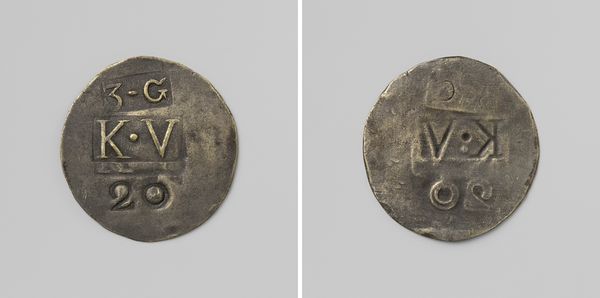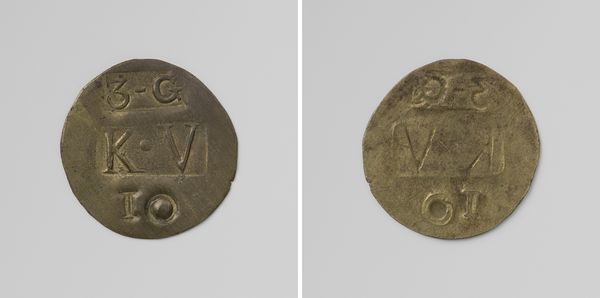
Tweede gesticht van de kolonie Veenhuizen, huismunt geslagen op last van de Maatschappij van Weldadigheid ter waarde van tien cent 1818 - 1859
0:00
0:00
anonymous
Rijksmuseum
print, metal, relief
#
dutch-golden-age
# print
#
metal
#
sculpture
#
relief
#
monochrome
Dimensions: diameter 2.8 cm, weight 1.49 gr
Copyright: Rijks Museum: Open Domain
Curator: Isn’t it interesting how the most unassuming objects can sometimes tell the grandest tales? This little coin—or ‘huismunt’—is no exception. It’s titled, “Tweede gesticht van de kolonie Veenhuizen, huismunt geslagen op last van de Maatschappij van Weldadigheid ter waarde van tien cent." The coin was made anonymously, somewhere between 1818 and 1859. Editor: My first thought: scarcity. Its rough edges, the muted golden sheen—it evokes a sense of limited resources, something bartered in the shadows. It feels weighty, beyond its physical size. Curator: Exactly! This wasn't your average tender. It was used within the Veenhuizen colony, which was essentially a workhouse for the poor and orphaned, set up by the Society of Beneficence. It’s a relief in metal; a very practical object with a rather heartbreaking story to tell. Editor: The inscriptions—"KV" for Kolonie Veenhuizen—starkly stamped on its surface are what catch my eye. It reminds me of Foucault’s discussions around surveillance and control, the architecture of power embedding itself in the minutiae of daily life. Even their money wasn’t their own. Curator: Right, even something as small as pocket change served as a constant reminder of their place in society. This little coin encapsulated the entire social structure: poverty managed, controlled, even monetized. The Society believed in rehabilitating people through hard work, but it’s a complex legacy. Editor: And that "10" at the bottom - such a small number, yet representing the quantification of labor, of human worth distilled down to a decimal. What would ten cents even buy someone within that closed system? The lack of detail in the design somehow amplifies the austerity of it all. Curator: Absolutely, and its survival is rather miraculous; to think, all the transactions it participated in! It’s not just an object of the past; it’s a portal to a deeply unsettling chapter in social history. You know, I keep imagining the hands it passed through... Editor: And what those hands were forced to create. For me, it’s a powerful, sobering piece, inviting us to critically examine systems of social control disguised as charity. Thanks for sharing this one; it really got me thinking.
Comments
No comments
Be the first to comment and join the conversation on the ultimate creative platform.
